Thirumuruganpoondi Temple, a popular Shaivite shrine near Avinashi in Tiruppur district, Tamil Nadu, is centred on the worship of Lord Shiva. Due to the temple’s mythological stories, Shiva is worshipped here, while Murugan is in a subsidiary shrine. It was built by the Chola kings in the 9th century and further extended to great accomplishments by the Vijayanagar dynasty, consisting of fine details of Dravidian architecture like delicate stone carvings and an impressive rajagopuram. The temple is famous for having the great deity Bhogasambandar; a sage who is said to have worshipped here to attain liberation.
Quick Facts About Thirumuruganpoondi Temple
Location: Tiruppur, Tamil Nadu
Thirumuruganpoondi Temple Address: Thirumuruganpoondi, Tiruppur, Tamil Nadu 641652
Thirumuruganpoondi Temple Timings: 6 AM – 12:30 PM; 4 PM – 8 PM
Entry Fee: None
How To Reach: Bus, taxi, and autorickshaw
Nearest Airport: Coimbatore International Airport, 40 kms
Nearest Railway Station: Tiruppur Railway Station, 9 kms
Best Time To Visit: October to February
Thirumuruganpoondi Temple Location
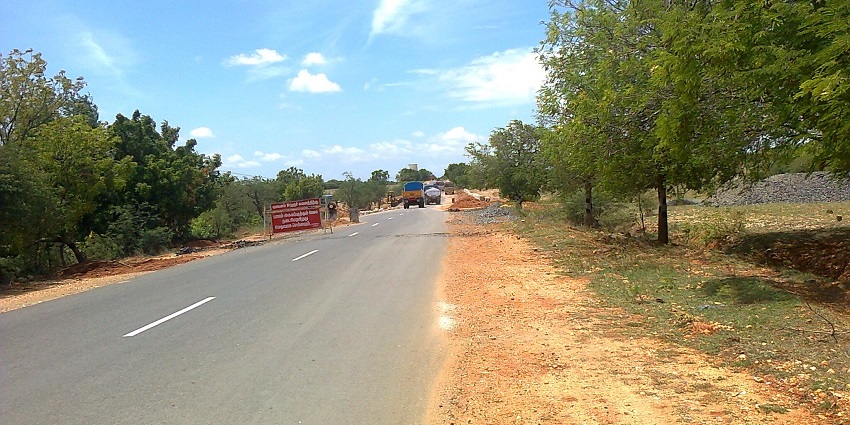
Photo: Mandradiar / Wikimedia Commons
Thirumuruganpoondi Temple is in the quiet town of Thirumuruganpoondi, just near Tiruppur, Tamil Nadu. It stands centrally at Thirumuruganpoondi Road and is reachable from the highway leading to Tiruppur-Coimbatore. The roads connected are Avinashi-Tiruppur Road and Thiruneelakandar Street. A noise-free small-town environment surrounds the temple with hotel inns, stays, and smaller eateries.
Suggested Read: Explore The Top Things To Do In Tiruppur For A Memorable Getaway
How To Reach Thirumuruganpoondi Temple
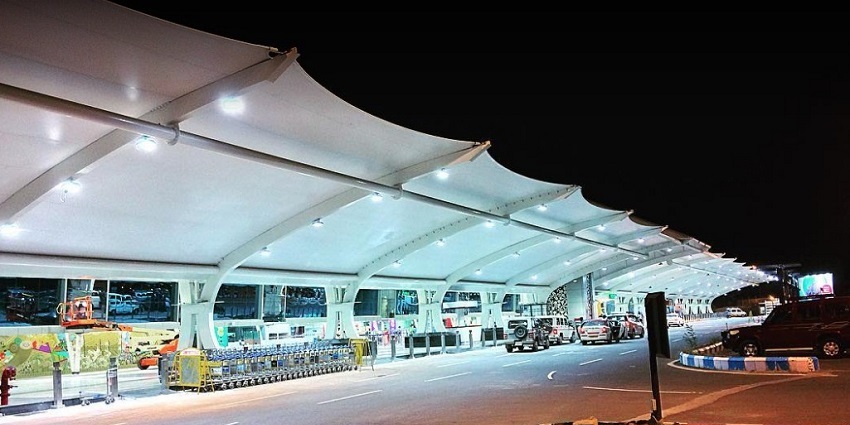
Photo: Ramprasad014 / Wikimedia Commons
By Air: The nearest airport to this temple is Coimbatore International Airport, which is about 40 km away. One can reach Tirupur by taxi or bus and then take the bus to the temple.
By train: The nearest major station is Tiruppur Railway Station, about 9 km away from the temple. Taxis and auto rickshaws are available at Tirupur.
By Road: It is accessible by road from Tiruppur, which takes about 15 – 20 min by car. One can get the bus service from Tirupur to Thirumuruganpoondi, which is 4 km from the temple.
Things To Do At Thirumuruganpoondi Temple
There are several things to do at the Thirumuruganpoondi Temple like observing the traditional ceremonies and watching the Tandava dance:
1. Observe The Traditional Ceremonies
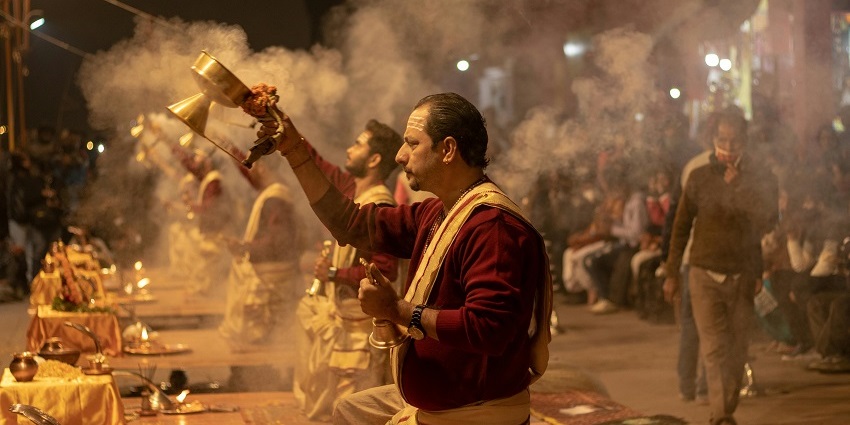
Photo: Iqbal farooz / Pexels / Image For Representation Only
Visiting Thirumuruganpoondi Temple helps devotees reach deep spiritual experiences through ancient rituals. Pujas, or the daily rituals, are spectacular, and the centrepiece remains the abhishekam or the sacred bath performed on the main deity, Lord Murugan. It forms part of a process whereby milk, honey, and other sacred offerings are presented to the deities. The spiritual ambience of the temple is at its best on one of the major festivals that celebrate Lord Murugan, which is Thai Poosam.
Suggested Read: Ancient Temples In Tamil Nadu For Every Devotee To Visit
2. Explore The Temple
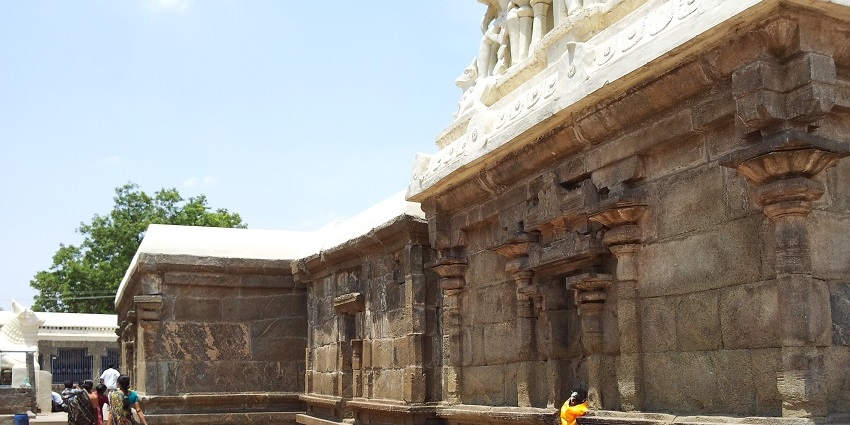
Photo: Darwinacitizen / Wikimedia Commons
The idol of Lord Murugan found inside the Sanctorum sanctum has six faces and is carved out of one stone. A shallow well is opposite the Lord Vinayagar temple, which is believed to give water every twelve years. There, the idols are of Sri Madhavaneswarar and Goddess Mangalambika, which is believed to be the original Thirumuruganpoondi temple. Behind the sanctum sanctorum are two idols of Lord Mahavishnu and Lord Brahma, respectively. There is also a hall in the outer corridor for the “Adalvallan Sabha,” where the Lord is believed to have performed the “Brahmma Tandava” dance.
3. Visit The Sacred Temple Tanks
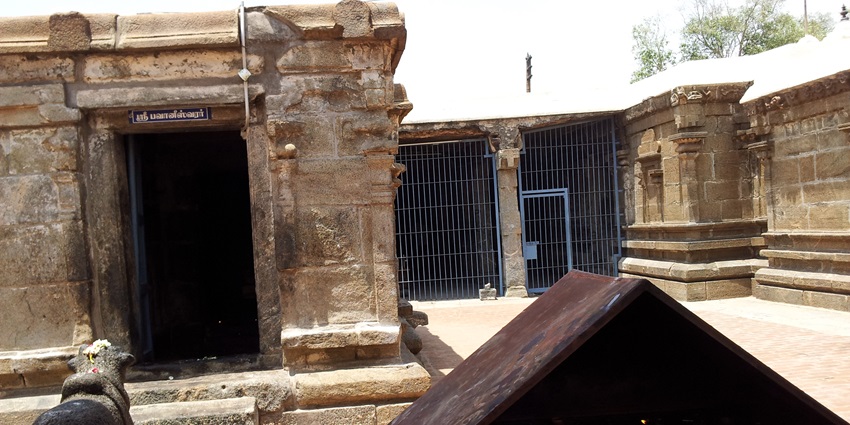
Photo: Darwinacitizen / Wikimedia Commons / Image For Representation Only
While exploring the spiritual side of Tamil Nadu, a stop at the temple tanks near Thirumuruganpoondi Murugan Temple is a must. These sacred tanks – Shanmugha Theertham, Gnana Theertham, and Brahmatheertham – are known for their deep spiritual significance. Many travellers take a peaceful moment here, offering prayers or simply soaking in the calm atmosphere. Locals believe the waters have purifying powers, often linked to age-old rituals. Surrounded by quiet landscapes, the tanks offer a beautiful setting to reflect and experience living traditions.
Suggested Read: Shiva Temples In Tamil Nadu
4. Attend Festivals

Photo: nck_gsl / Pixabay / Image For Representation Only
A visit to the Thirumuruganpoondi Temple, Tiruppur, offers a deep dive into Tamil culture and devotion. The temple comes alive during the grand Brahmotsavam in Maasi (Feb – Mar), with colourful rituals and processions. Other popular celebrations include Thaipoosam and Kanthasashti, devoted to Lord Murugan. Karthigai Deepam fills the temple with glowing lamps, while Arudra Darshan celebrates Lord Shiva. Events like Navaratri, Annabhishekam, and Vaikasi Visakam also give travellers a chance to witness age-old customs and heartfelt devotion.
5. Participate In Daily Rituals
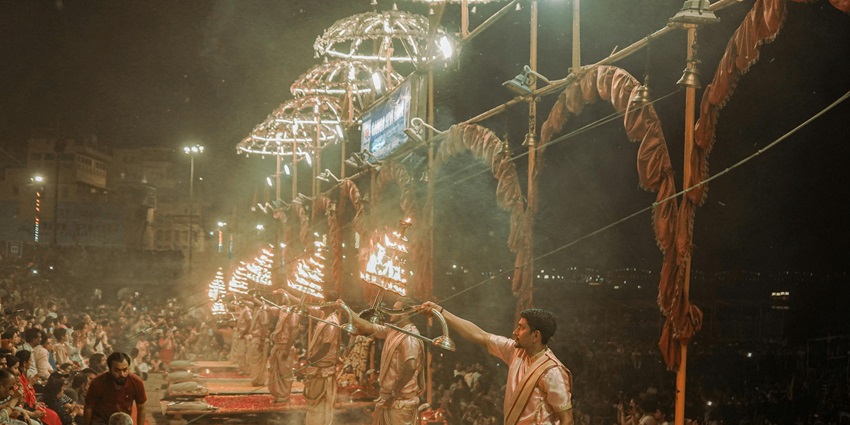
Photo: Deepak Deshwal / Pexels / Image For Representation Only
Joining the daily rituals at Thirumuruganpoondi Temple offers a deep insight into its spiritual life. The temple holds four ceremonies each day, early morning at 6 AM, followed by ones at 8 AM, noon, and late afternoon. Each ritual features traditional offerings like floral decoration, food offerings, and lamp ceremonies for both Lord Thirumuruganatheeswarar and Goddess Avudainayagi. The sacred abhishekam, or holy bath, is particularly striking. Visitors can observe these rituals during temple hours, from early morning until noon and again in the evening.
Suggested Read: The Harvest Festival Of Tamil Nadu
6. Meditation & Spiritual Reflection
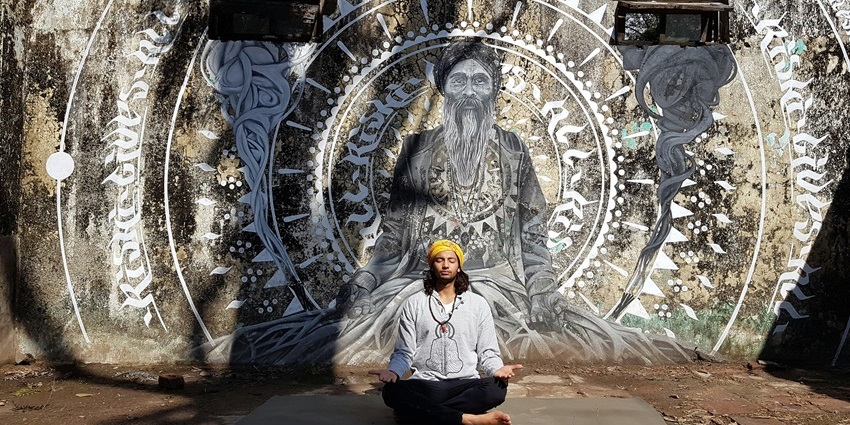
Photo: Laury Ricquebourg / Unsplash / Image For Representation Only
In addition to spiritual vibes, Thirumuruganpoondi Temple offers moments to reconnect. The temple has peaceful premises with a picturesque hill backdrop, making it an ideal destination for meditation and spiritual reflection. This immersive experience helps devotees to reflect deep inside their souls and find peace. So, if you are looking for an abode that offers a blend of spirituality and tranquillity, you should visit Thirumuruganpoondi Temple.
7. Photography & Nature Walks

Photo: Soffie Rollins / Unsplash / Image For Representation Only
The architectural brilliance of Thirumuruganpoondi Temple is what captivates the attention of the visitors. The temple is adorned with intricate designs and motifs, adding a layer of beauty to it. You can click an array of pictures here. As the temple is surrounded by rugged peaks and lush greenery, you can also choose to indulge in nature walks. You walk through the trails, taking in panoramic views of the surroundings.
Suggested Read: Places To Visit In Tamil Nadu During December For A Memorable Escape
Places To Visit Around Thirumuruganpoondi Temple
Visit Thirumuruganpoondi Temple and explore the surrounding areas for all the cultural and spiritual undertones that envelop the region.
1. Arulmigu Avinashiappar Temple
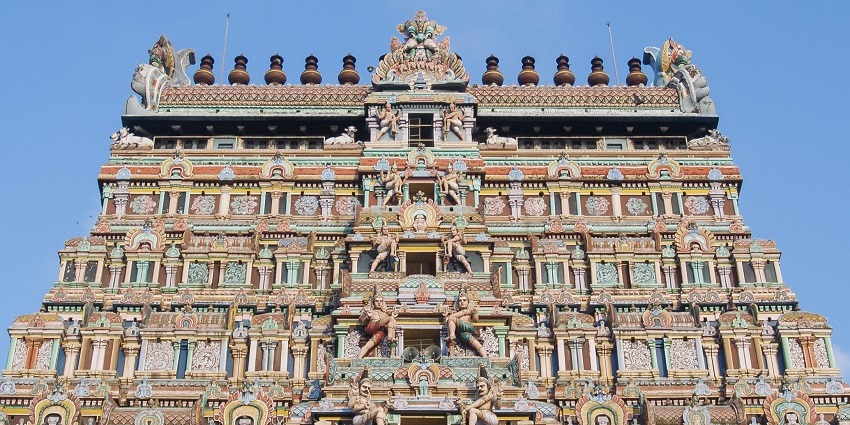
Photo: Matthew T Rader / Wikimedia Commons / Image For Representation Only
Arulmigu Avinashiappar Temple is one of the popular Shiva temples in the town of Avinashi, attracting devotees for its architectural grandeur as well as spiritual significance. The temple is steeped in history and is dedicated to Lord Shiva, also known as Avinashi Appar. Its beautifully carved pillars, majestic gopurams, and spacious halls are examples of perfect Dravidian architecture. The Avinashi Therottam, commonly known as the Car Festival, is a spectacular annual phenomenon wherein thousands of devotees draw a decorated temple chariot in a procession.
Distance: 6 km from Thirumuruganpoondi Temple
Timings: 6 AM – 12 PM, 4 PM – 8 PM
2. Kariyakali Amman Temple
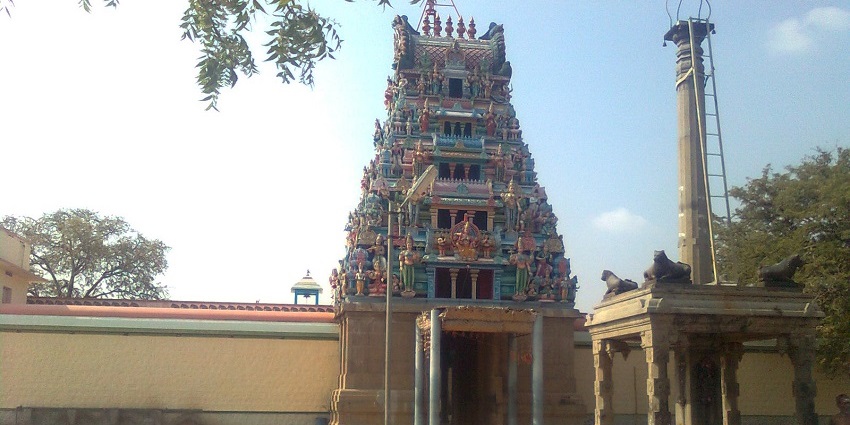
Photo: Ksp balu / Wikimedia Commons
Kariyakali Amman Temple is situated in Tiruppur and is the temple of Goddess Kali, the most ferocious and protective goddess. Thousands of devotees gather yearly for the annual Kali Amman festival to pay their respects to the goddess by attending ceremonies, dances, and even processions. During the season, flowers and lights decorate the temple, giving it a colourful and devotional environment. It is believed that the people visiting the Karikali Amman Temple are spiritually and emotionally protected by the power surrounding the deity.
Distance: 22 km from Thirumuruganpoondi Temple
Timings: 5:30 AM – 12:30 PM, 4:30 PM – 8:30 PM
Suggested Read: Varahi Amman Temples In Tamil Nadu For A Glimpse Into The World Of Varahi
3. Chennimalai Murugan Temple
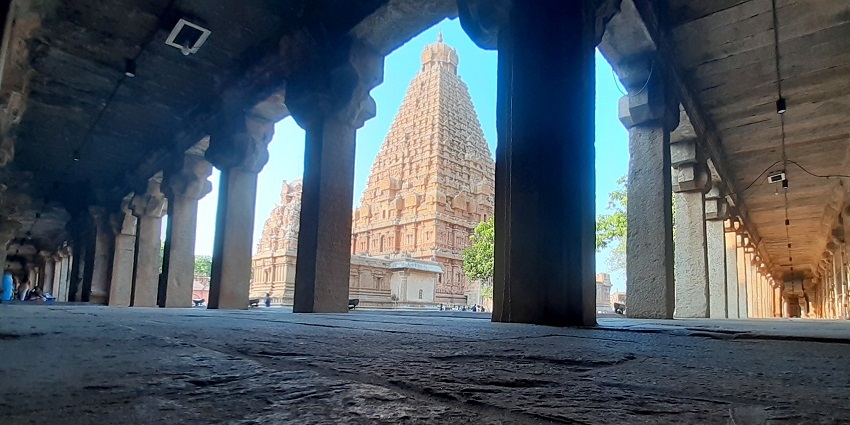
Photo: Sindugab / Wikimedia Commons / Image For Representation Only
Chennimalai Murugan Temple is perhaps one of the most famous pilgrim centres of Lord Murugan, situated atop the Chennimalai Hill in Erode district, Tamil Nadu. The temple is believed to be old and belongs to the Kongu Chola period. It is famous for its lofty location on the hill, which can be reached either by a steep flight of over 1,300 steps or by road. Lord Murugan is worshipped here as Suthandira Velan with a sacred spear, representing the God of liberation and valour. During the festivals of Thaipusam and Panguni Uthiram, thousands of devotees frequent this temple. There are legends that Sage Agastya worshipped here, thus making it sacred for blessings and fortitude.
Distance: 40 km from Thirumuruganpoondi Temple
Timings: 6 AM -12 PM, 4 PM – 8 PM
4. Amaravathi Dam

Photo: Marcus334 / Wikimedia Commons
Constructed across the Amaravathi River, Amaravathi Dam lies west of Udumalpet in the Tiruppur district of Tamil Nadu. Built in the 1950s, this waterbody serves irrigation purposes in neighbouring districts and is also significant in preventing floods. The dam is situated in a green environment surrounded by hills and draws many nature lovers. Close to this is the Amaravathi Crocodile Farm, which consists of a large population of mugger crocodiles, attracting adventure and wildlife enthusiasts as well as touring visitors. The calm atmosphere and the adjoining Anamalai hills provide a place to retreat and stunning sites for picnics.
Distance: 90 km from Thirumuruganpoondi Temple
Timings: 9 AM – 6 PM
Suggested Read: Temples In Tamil Nadu
5. Thirumoorthy Hills And Temple

Photo: Arun Sriram / Wikimedia Commons
Thirumoorthy Hills is a beautiful destination for lush green hills, trekking trails, and the ancient Thirumoorthy Temple. It is said to be associated with Sage Agastya and dedicated to Lord Shiva. According to legend, Sage Agastya meditated here once, which makes the temple highly spiritually significant. The beauty is further enhanced by the approach of Thirumoorthy Dam, which is close to it and offers boating options and serene views. With a rich historical background alongside the scenic natural landscape of the Thirumoorthy Hills.
Distance: 90 km from Thirumuruganpoondi Temple
Timings: 6 AM – 6 PM
6. Anaikatti
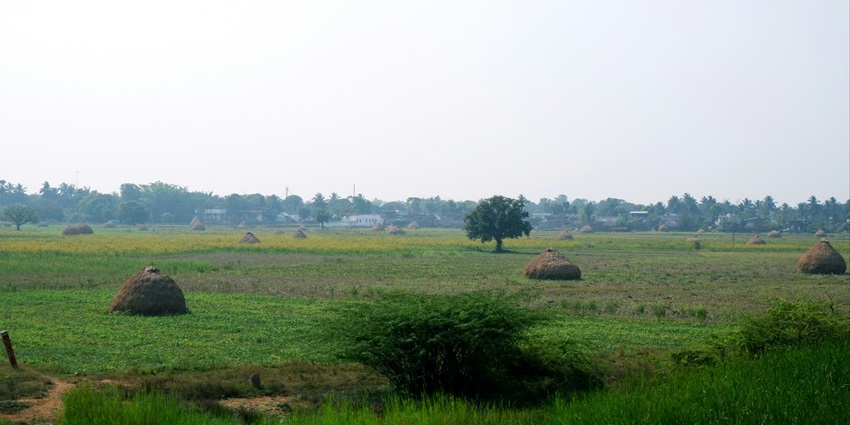
Photo: Vizag Explore / Unsplash / Image For Representation Only
Blessed with emerald green valleys, gushing streams, dense forests, and roaring waterfalls, Anaikatti is a picturesque destination near Thirumuruganpoondi Temple. It is known for its awe-inspiring natural beauty and thrilling adventure. Anaikatti translates to ‘group of elephants’, hence this place is a natural habitat for elephants. Here, you can spot an array of elephants either walking down the rugged trails or playing with each other. Anaikatti is also home to River Siruvani, India’s sweetest river, adding to its fame.
Distance: 85 km from Thirumuruganpoondi Temple
Timings: 6 AM – 8 PM
Suggested Read: Things To Do In Anaikatti For A Nature Lover’s Paradise
7. Valparai

Photo: Kkdi63 / Wikimedia Commons
Valparai, a charming hill station in the Annamalai Tiger Reserve Forest of Tamil Nadu, is one of the popular destinations among travellers. From towering peaks and verdant valleys to shimmering streams and dense forests, this place is decked with nature’s unrivalled beauty. Located at a lofty height of about 3,500 feet, Valparai offers enchanting vistas of the surroundings. It is an ideal destination for travellers seeking a peaceful escape from the hustle and bustle of daily life. Some of the major attractions of Valparai include Nallamudi Viewpoint, Nirar Dam and Upper Sholayar Dam, Grass Hills National Park, and more.
Distance: 172 km from Thirumuruganpoondi Temple
Timings: 24*7
8. Tiruppur

Photo: Rsrikanth05 / Wikimedia Commons
Nestled on the verdant banks of the Noyyal River, Tiruppur well-known city in the southern part of the Deccan Plateau. In addition to being a spiritual hub for devotees, Tiruppur is also known as the “Knitwear Capital of India” and is a major tourism destination for the state of Tamil Nadu. Arulmiga Uthukuli Murugan Temple — one of the top temples in Tirupur, Sivanmalai Temple, Amaravathi Dam, Panchalinga Waterfall, Arulmiga Subramaniya Swamy, and Sukreeswarar Temple are some astonishing places to visit in Tirupur.
Distance: 7 km from Thirumuruganpoondi Temple
Timings: 24*7
Suggested Read: Explore The Top Things To Do In Tiruppur For A Memorable Getaway
Where To Stay

Photo: Derek Jensen / Wikimedia Commons / Image For Representation Only
There are many accommodation options suitable for all budgets in Tirupur and other neighbouring areas for visitors to Thirumuruganpoondi Temple and local attractions. Hotel Angel in Tiruppur is quite famous for its well-maintained rooms, clean ambience, and good customer service. Another nice hotel is Velan Hotel Greenfields, which has broad rooms, offers modern equipment and has a pool to relax.
Suggested Read: Places To Visit In Tamil Nadu With Family On A Holiday
Where To Eat
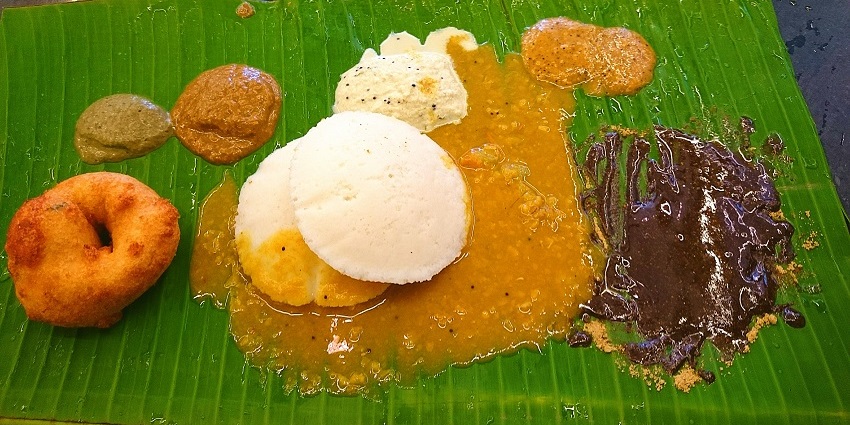
Photo: Aashita Kawatra / Wikimedia Commons / Image For Representation Only
Thirumuruganpoondi and Tiruppur have plenty for visitors wishing to relish traditional South Indian fare with authentic Tamil flavour. Choices like Sri Krishna Mess, Sree Annapoorna Sree Gowrishankar with wholesomeness of meals, and vegetarian fare on banana leaves serve traditional Tamil Nadu flavours in sambar, rasam, and poriyal. The quick bite and breakfast here in Hotel Gowri Sankar at Tiruppur has dosas with a crunchy taste and idlis soft with steaming vadas. Street vendors serve hot, fresh, homemade dishes, including idli, pongal, and vadas.
Other Factors To Consider
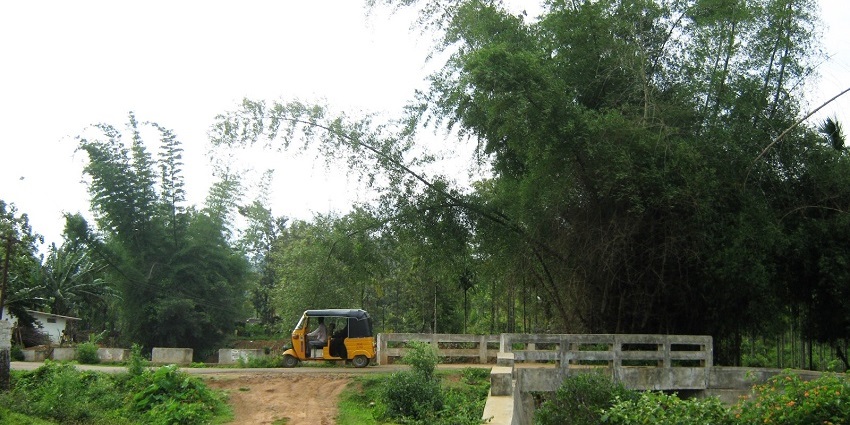
Photo: Shareef Taliparamba / Wikimedia Commons / Image For Representation Only
The ideal time to visit Thirumuruganpoondi Temple is from October to February, as they are Tamil Nadu’s cooler months. The climate remains cool, making it a good time to visit temples and other attractions, unlike other seasons when the high temperature can be exhausting. It coincides with several festivals celebrated in the city’s temples to experience the local culture and traditions within and around the temple.
Suggested Read: Things To Do In Tamil Nadu
Thirumuruganpoondi Temple is the epitome of the rich religious and cultural heritage of Tamil Nadu. Be it a pilgrimage or just exploring Tamil Nadu’s historic temples; one finds the calm and ancient legends of these temples where the atmosphere makes for a deeply spiritual experience. It stands with an appeal to people to the sacred artistry of South India’s colourful culture. Plan your calm and reverent time out by booking a trip with TripXL.
Cover Photo: Darwinacitizen / Wikimedia Commons


 WhatsApp
WhatsApp
 Twitter
Twitter









